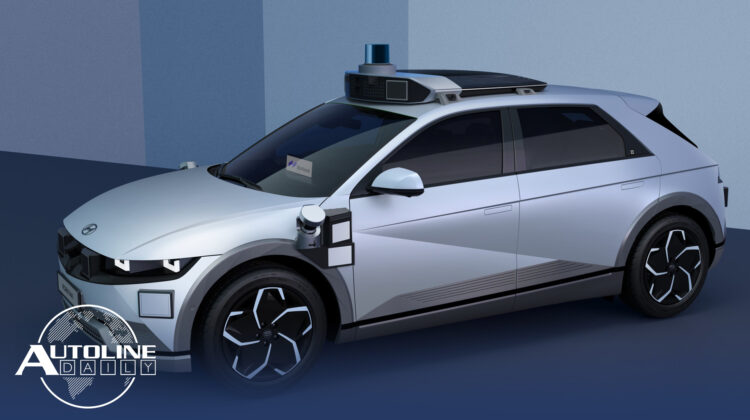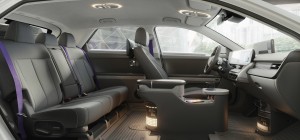
Listen to “AD #3151 – Hyundai, Aptiv and Lyft Ready for Robotaxis; GM Not Confident in LG Chem; Will Human Drivers Be Banned?” on Spreaker.
Follow us on social media:
Runtime: 10:49
0:07 Lotus Moves to Wuhan, China
1:16 GM Not Confident in LG Chem
2:06 Tesla Aiming for India
3:40 Hyundai, Aptiv & Lyft Ready for Robotaxis
4:29 Will Human Drivers Be Banned?
5:47 TRW Makes Quiet Brake Pads for EVs
7:23 Ford Makes EV Charging Simple
8:46 Motorcycles with ABS Are Far Safer
Visit our sponsors to thank them for their support of Autoline Daily: BorgWarner, Bridgestone, Intrepid Control Systems, Schaeffler and Wacker.
This is Autoline Daily, the show dedicated to enthusiasts of the global automotive industry.
LOTUS MOVES TO WUHAN, CHINA
Lotus is one of the most storied names in the auto industry. Founded by Colin Chapman, it was renowned for its lightweight cars. Lotus and Ford collaborated a lot in the 1960s, developing cars, both on and off the track. After Chapman died in 1982 Lotus went through a variety of different owners, including General Motors, a private investment group and Proton, the Malaysian automaker. Then Chinese automaker Geely bought Proton, and now Lotus is moving its global headquarters to Wuhan, China. It’s also building an assembly plant there with the capability of making 150,000 electric cars a year. And it just signed a deal with NIO to develop high end EVs. Here’s our Autoline Insight. Lotus is respected globally for its engineering prowess. But it’s never been financially successful as an automaker. Now we’ll have to wait and see if Geely can make a go of it.
GM NOT CONFIDENT IN LG CHEM
GM hasn’t been shy about blaming LG Chem for Chevy Bolts catching fire over battery problems. And now the automaker says it isn’t confident LG can make defect-free batteries. Because of that, GM is holding off on repairing the 141,000 Bolt EVs and EUVs it recently had to recall. It’s also keeping its Orion Assembly plant idled until it’s confident the fixes for the batteries are safe. GM is monitoring LG’s manufacturing process to try and find the defect. The automaker and LG are negotiating on how much LG has to pay for the cost of the recall which is $1.8 billion.
TESLA AIMING FOR INDIA
Tesla is another step closer to selling its EVs in India. The company just received permission from the government to make or import four models. But it will be a tough market to crack. EVs only account for 1% of sales in the country and Tesla’s are much more expensive than the EVs already sold there. On top of that, India has high import tariffs which will add to the price. However, if demand is high enough, Elon Musk has hinted it could open a factory in India at some point. And dangling out the prospect of a factory could get Indian officials to reduce the taxes on EVs.
HYUNDAI, APTIV & LYFT READY FOR ROBOTAXIS
On an earnings call with investors recently, GM CEO Mary Barra said that autonomous cars are only quarters away, not years away. And there sure is a lot of activity on the AV homefront. The latest comes from Hyundai which just unveiled its robotaxi based on the Ioniq 5 EV. Hyundai and the supplier Aptiv formed a joint venture called Motional to develop AVs. And they’re turning the Ioniq into a Level 4 AV that will be used by Lyft, the ride hailing company in 2023. So that riders will be fully aware that they’re getting into a robotaxi with no human driver, Motional and Hyundai made no effort to hide the 30 sensors on the roof and doors.
WILL HUMAN DRIVERS BE BANNED?
So in the future, will autonomous cars lead to a ban on human drivers? A study from ID TechEx predicts that’s exactly what’s going to happen. It says human driving will be banned by 2050. It’s all about safety. AVs will be far safer than humans, says the study. It bases that on analysis of autonomous disengagements reported to the California DMV. Waymo and Cruise are currently traveling about 30,000 miles between disengagements, and that’s doubling every year. At that rate, by 2046 AVs will be able to travel 3 million miles between disengagements. That suggests traffic accidents could drop to only 1 a year. Well, here’s our Autoline Insight. We don’t think driving will ever be banned. And we present Toyota’s Guardian philosophy as Exhibit #1. That’s where drivers can do all the driving they want, but the car will never let them get in an accident. It’s as if a guardian angel is hovering above the car making sure that nothing bad ever happens.
TRW MAKES QUIET BRAKE PADS FOR EVS
EVs are so quiet that you can hear the brake pads engage, especially when backing up at low speed. So TRW, which is part of the ZF Group, is coming out with aftermarket brake pads that are specially made for EVs. Called Electric Blue, the pads are made from a new material that not only significantly reduces interior noise levels but also vibrations during braking. And they emit 45% less brake dust so you don’t have to spend more time looking at or cleaning dirty wheels. Right now it looks like these Electric Blue brake pads are only available in Europe. There’s 21 different part numbers that cover EVs that make up 98% of sales in Europe and 30 part numbers for hybrids.
FORD MAKES EV CHARGING SIMPLE
EV charging can be confusing to the general public. There’s different levels of charging, different charge rates and the size of the on-board chargers are different. To make things easier Ford created a software program that combines different charging networks into one platform. Darren Palmer, the head of all battery electric vehicles at Ford, fills in the details.
“We made the system, it automatically routes for you. You just say what you want to do and it tells you how to do it, ‘so I want to go to Chicago.’ It will automatically add chargers, it will find the fastest ones of the best quality and offer those up to you. By the way you get 250 kilowatts free, maybe that’s four charges, you get that free with the car to get you started. And then those ones, you’ll drive there plug-in and take 10 seconds to automatically authorize, you check its working then walk away. And that’s the experience a lot of people will have. You don’t need to get into which type, which phase, how many, it doesn’t matter. The system has it all online and it tells you and that’s a curated set. There are more chargers but they’re not in our curated set, in other words the quality could be random and we haven’t selected them for those reasons.”
We’ve used Ford’s system and it’s definitely better than everyone else’s except Tesla’s.
MOTORCYCLES WITH ABS ARE FAR SAFER
Passenger cars in the U.S. must be equipped with anti-lock braking systems but that’s not the case with motorcycles. And a new study from the Insurance Institute for Highway Safety shows motorcycles equipped with ABS are safer. It looked at 65 models with ABS made between 2013 and 2019 and found that bikes equipped with the system were in 22% fewer fatal crashes per 10,000 registered vehicle years. A registered vehicle year is equal to one motorcycle registered for one year. The IIHS has been calling on NHTSA to mandate ABS for motorcycles since 2013 but that hasn’t happened. However, the feature is becoming more common, it’s standard on half of 2020 models and it’s optional on another quarter.
Nissan went to the head of the class when it finally redesigned the Frontier. The changes it made are significant, and we’re going to get into that on Autoline After Hours this Thursday. Melaina Vasko is a senior manager at Nissan’s U.S. Tech Center where the vehicle was developed. If you’ve got questions about the Frontier you’d like us to ask Melaina, tweet it to us or drop an email to viewermail@autoline.tv. Then join Gary and I on Thursday for some of the best insights into what’s going on in the automotive industry.
And that wraps up today’s report. Thanks for watching.
Thanks to our partner for embedding Autoline Daily on its website: WardsAuto.com
Seamus and Sean McElroy cover the latest news in the automotive industry for Autoline Daily.









